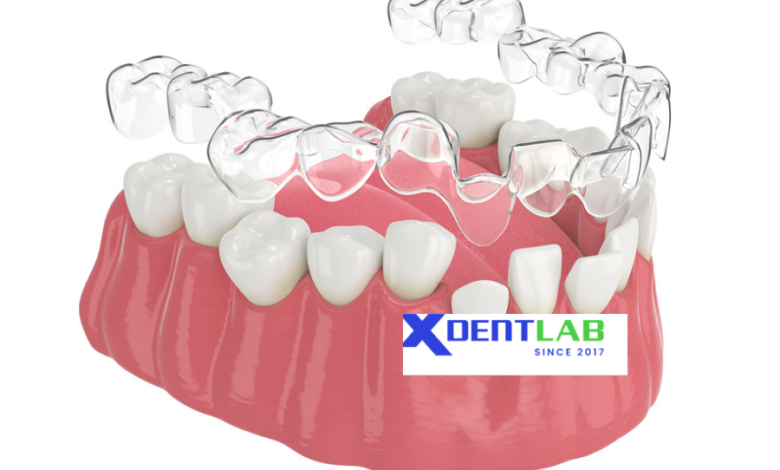Introduce Outsource clear aligner production overseas

Introduce Outsource clear aligner production overseas xdentlab.com . Clear aligner production is a multi-faceted process that integrates advanced technology, high-quality materials, and skilled craftsmanship. The primary goal is to create orthodontic devices that effectively straighten teeth while offering a discreet and comfortable option for patients. The production stages typically begin with an initial consultation, where dental professionals gather patient impressions using digital scans or physical molds. This data is essential for creating a personalized treatment plan.
Understanding Clear Aligner Production
The next step involves computer-aided design (CAD) software, which allows technicians to visualize and model the aligner’s structure. Utilizing this technology, practitioners can simulate tooth movements throughout the treatment period, ensuring the aligners will address the specific misalignment issues faced by the patient. Each design is then reviewed and refined to guarantee accuracy before proceeding to the manufacturing stage.
Introduce Outsource clear aligner production overseas In the manufacturing phase, high-quality thermoplastic materials are utilized, such as polyethylene terephthalate glycol (PETG), which is known for its durability and flexibility. The production process involves either 3D printing or vacuum forming techniques. 3D printing enables rapid prototypes and precise dental models, while vacuum forming shapes the thermoplastic sheets over the models created from the CAD designs. Each aligner is produced to specific tolerances, which emphasizes the crucial role of precision in the final product.
The timeline from design to delivery can vary depending on factors such as the complexity of the case and the efficiency of the production process. Generally, it takes anywhere from two to four weeks to create a series of aligners ready for the patient. Throughout this production process, collaboration between various players, including orthodontists, dental laboratories, and technology providers, is imperative to ensure quality and effectiveness. The ongoing advancements in dental technology continue to enhance the capabilities within the clear aligner market, fostering better outcomes and patient satisfaction.
Benefits of Outsourcing Production
Outsourcing the production of clear aligners overseas presents numerous benefits that can significantly enhance business operations. One of the primary advantages is cost reduction. By transferring production to regions with lower labor costs, companies can achieve substantial savings in manufacturing expenses. This financial flexibility allows organizations to allocate resources toward other critical areas, such as marketing or research and development.
Another significant benefit of Vietnam dental laboratory is access to advanced technologies and specialized expertise. Many overseas manufacturers utilize state-of-the-art equipment and techniques, which can lead to superior product quality and increased efficiency. Engaging with providers who are leaders in the field of orthodontics often means leveraging their innovations and insights, thereby enhancing the overall production process.
Enhanced production capabilities are yet another advantage of outsourcing. Providers located overseas may have the infrastructure and workforce necessary to accommodate large-scale production. This scalability ensures that businesses can quickly respond to fluctuating market demands without the need for substantial internal investments in facilities or labor. This capability is especially crucial in industries with rapid product cycles, such as orthodontics, where speed can be a competitive advantage.
Additionally, outsourcing can lead to improved turnaround times. By utilizing suppliers positioned in different time zones, companies might streamline their operations, reducing the overall cycle time from design to delivery. This efficiency not only benefits logistics but also results in a faster product launch, enabling firms to gain entry into international markets promptly.
While these advantages are compelling, it is essential to maintain quality control throughout the outsourcing process. Implementing thorough oversight mechanisms and quality assurance protocols can help ensure that products meet the required standards, safeguarding both brand reputation and customer satisfaction. Proper alignment in operational strategies and communication with overseas partners will ultimately yield more favorable outcomes.
Choosing the Right Overseas Partner
When considering outsourcing clear aligner production, selecting the appropriate overseas partner is critical to ensuring the quality and efficiency of the manufacturing process. The first step in this decision-making process involves evaluating potential manufacturers based on several key factors that align with your business needs.
Technical expertise is paramount. Vietnam dental laboratories is essential to assess the prospective partner’s knowledge and experience in producing clear aligners. A manufacturer with a proven track record in orthodontic products can provide invaluable insights and innovative solutions. Look for certifications that indicate adherence to international quality standards, such as ISO 13485, which demonstrates compliance with regulations specific to medical devices and ensures that the products meet the necessary safety requirements.
Another important consideration is the production capacity of the manufacturer. It is crucial to establish whether the potential partner can handle your projected volume of orders without compromising quality or delivery timelines. Understanding their technology and infrastructure will also provide insight into their ability to scale up production if demand increases.
Effective communication is vital when collaborating with overseas partners. Evaluate their responsiveness and willingness to engage in discussions regarding design specifications, production timelines, and potential challenges. Clear and open lines of communication foster a productive working relationship and help mitigate misunderstandings that may arise due to cultural differences.
Moreover, reviewing past client references can offer valuable insight into the manufacturer’s reliability and quality of service. Reach out to other companies that have collaborated with the manufacturer to gather feedback on their experiences. Conducting thorough due diligence, including site visits, is recommended to better understand the operational processes and workplace conditions of the potential partner.
Must-see articles : Clear aligner dental labs
Finally, familiarize yourself with the legalities involved in international outsourcing, such as import/export regulations, intellectual property rights, and contract enforcement in the partner’s country. By carefully considering these factors, businesses can make informed decisions that protect their interests and ensure successful collaboration in clear aligner production.
